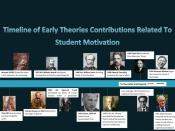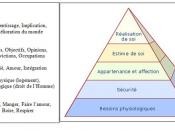1.0 Introduction:
Before the Hawthorne Studies, conducted by Elton Mayo from 1924 to 1932 (Dickson, 1973), employee were considered just another input into the production of goods and services. Hawthorne studies changed this way of thinking, the result of this study found the employees are not motivated just by money; employee behaviour is linked to their attitudes (Dickson, 1973). Hence the Hawthorne studies began the human relations approach to management, whereby the needs and motivation of employees became the primary focus of managers (Bedeian, 1993)
Understanding what motivated employees and how they were motivated was the focus of many researchers following the publication of the Hawthorne Study results (Terpstra, 1979). Five major approaches that have led to our understanding of motivation are Maslow's need-hierarchy theory, Herzberg's two-factor theory, Vroom's expectancy theory, Adams' equity theory, and Skinner's reinforcement theory.
In this essay, the focus would be at Hertzberg's two-factor theory.
Most of us would like a job that is stimulating, untroubled and provides personal satisfaction. However, this needs to be balanced against productive output requirements, individual capabilities and the overall corporate culture.
The mechanics of such needs in relation of satisfaction and job prosperity was vague until Frederick Hertzberg in 1959, and unlike Maslow where he discussed the human needs to motivation as a form of hierarchical pyramid, Hertzberg dissected such needs in his two factors theory of job satisfaction, the Hygiene theory and the Motivation theory.
This essay will give a brief outline of these two factors theory of job satisfaction, and the reason behind its effectiveness till this day and time, as well outline the criticism that have been levelled at the theory.
2.0 Hertzberg Two Factors Theory:
Hertzberg's (2003) theory was that there were two kinds of factors that influenced the motivation of employees, hygiene factors...


